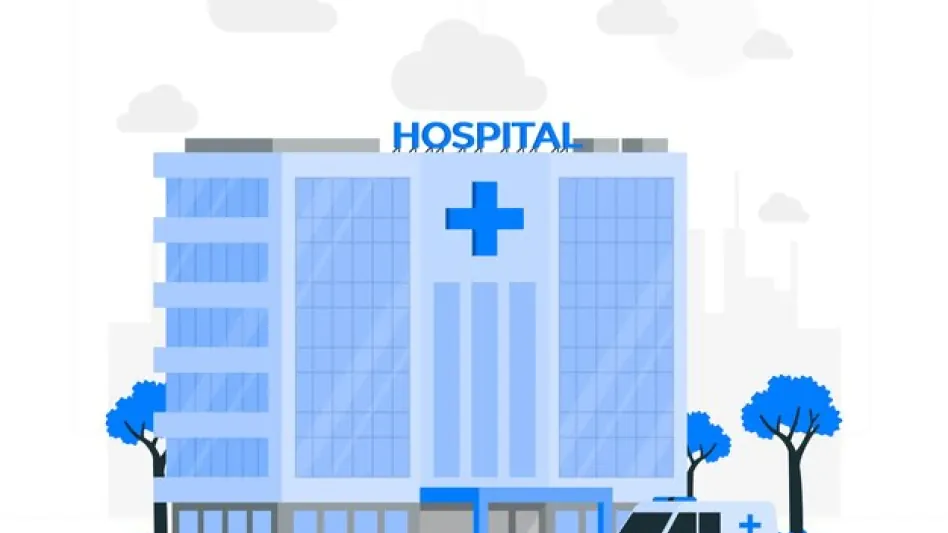The healthcare logistics sector is witnessing an unprecedented surge as it strives to ensure the timely and secure delivery of medical products and devices. Detailed market research conducted by Arizton has projected that the market is set to attain a substantial value of $290.73 billion by the year 2029. This projection comes in comparison to a valuation of $185.77 billion in 2023, reflecting an impressive compound annual growth rate (CAGR) of 7.75% from 2023 to 2029. A multitude of factors, including advancements in temperature-controlled logistics, the growth of healthcare facilities, and strategic collaborations, are driving this upward trend.
Key Drivers of Market Growth
Temperature-Controlled Logistics Solutions
An essential driver of growth in the healthcare logistics industry is the increasing prevalence of temperature-sensitive drugs and biological clinical materials. With heightened awareness among pharmaceutical and logistics companies, the demand for temperature-controlled logistics solutions continues to surge. These solutions are critical for maintaining the integrity and efficacy of sensitive healthcare products during transportation and storage.
As temperature-controlled logistics become more prominent, healthcare logistics companies are investing heavily in innovative technologies to enhance their capabilities. Such initiatives have become integral to the industry, ensuring that temperature-sensitive products like vaccines, insulin, and other biologics are transported under optimal conditions. This focus on maintaining precise temperature controls mitigates risks associated with temperature fluctuations, which can compromise product quality and efficacy.
Growth in Healthcare Facilities Sector
The healthcare facilities sector, which encompasses hospitals, urgent care units, doctors’ offices, nursing homes, and ambulatory surgical centers, is projected to be the fastest-growing end-user segment within the healthcare logistics market. This sector is expected to rise at a CAGR of 8%, reaching a market value of $90.42 billion by 2029. Moreover, in 2023, it already accounted for 30.67% of the global market, highlighting its significant share and influence within the healthcare logistics landscape.
This rapid growth within the healthcare facilities sector reflects the increasingly complex nature of healthcare systems and the necessity for a robust logistics infrastructure. As patients seek diverse care options, from urgent care centers to specialized ambulatory surgical centers, the logistics sector must adapt to ensure the reliable and timely delivery of medical supplies. The sector’s expansion underscores the critical role of logistics in supporting the operational efficiencies and readiness of various healthcare facilities.
Strategic Collaborations with Third-Party Logistics Providers
Strategic collaborations with third-party logistics (3PL) providers, such as DHL, UPS, Yusen Logistics, and Nippon Express, are playing a pivotal role in reducing healthcare expenses while upholding high service quality standards. These partnerships leverage streamlined processes, advanced technology, and established infrastructure to minimize wastage and inefficiencies within the healthcare logistics sector. By optimizing cost efficiency and maintaining high service standards, 3PL collaborations are becoming indispensable to healthcare logistics operations.
These partnerships also enable healthcare companies to benefit from the vast networks and expertise of established 3PL providers. As a result, they can focus on core competencies while ensuring that logistics operations are handled efficiently. This strategic collaboration model is essential for the future growth of the healthcare logistics market, as it facilitates improved service delivery and cost management.
Emerging Market Trends
Shift Towards Non-Acute Care Settings
A significant trend reshaping the healthcare logistics landscape is the shift towards non-acute care settings. Driven by the necessity to expand access, curtail costs, and improve patient outcomes, this migration is characterized by the growing prevalence of ambulatory surgery centers, community clinics, and home care services. These centers offer convenient and affordable alternatives to traditional hospital-centered care, particularly for routine procedures and chronic disease management.
The shift towards non-acute care settings reflects a broader move towards patient-centric and value-based care models. This transition aims to enhance care coordination, improve patient satisfaction, and reduce healthcare costs by providing care in more accessible and less resource-intensive settings. Consequently, the logistics sector is evolving to support this new paradigm by ensuring that medical supplies are efficiently delivered to these non-acute care locations.
Impact of Mergers and Acquisitions
Mergers and acquisitions (M&A) are instrumental in facilitating the shift towards non-acute care settings. Healthcare organizations are striving to extend their service offerings and integrate non-acute care into their networks through strategic M&A activities. Acquiring local hospitals with ambulatory surgery centers or clinic networks enhances care coordination and access across various care points. This strategic approach aligns with the broader transition towards holistic, patient-centric care models.
The impact of these M&A activities is profound, as they enable healthcare organizations to create more integrated and comprehensive care networks. By incorporating non-acute care services, healthcare providers can offer a continuum of care that spans different care settings. This integration enhances patient outcomes by ensuring seamless transitions between acute and non-acute care environments, ultimately contributing to the overall efficiency and effectiveness of healthcare delivery.
Technological Advancements
Adoption of Cloud-Based ERP Systems
The adoption of cloud-based Enterprise Resource Planning (ERP) systems within the healthcare supply chain domain is revolutionizing data management practices across the sector. These systems centralize and manage extensive data related to inventories, procurement, distribution, and other supply chain activities, providing enhanced visibility and operational insights. The integration of cloud-based ERP platforms allows for real-time monitoring of inventory levels, demand trends, and supply chain performance across various facilities and geographical locations.
One of the most compelling advantages of these ERP systems is their capacity for data integration, pooling information from diverse sources into a unified interface. This real-time data accessibility enables supply chain managers to make prompt, informed decisions, optimizing overall operational efficiency. Additionally, deploying advanced technologies like artificial intelligence (AI) and machine learning (ML) within these ERP systems pushes the boundaries of what is achievable in healthcare logistics.
Integration of AI and Machine Learning
The integration of AI and ML technologies into cloud-based ERP systems is transforming healthcare logistics by harnessing extensive data for predictive analytics and process optimization. AI and ML algorithms analyze historical demand patterns, allowing for accurate prediction of future inventory needs and minimizing the chances of stockouts or overstocking. This predictive capability ensures that healthcare facilities can maintain optimal inventory levels, reducing the risk of supply shortages or excess.
Furthermore, AI-driven analytics can preempt potential supply chain disruptions, such as delivery delays or sudden demand shifts. By identifying and addressing these challenges proactively, stakeholders can mitigate risks and ensure operational efficiency. The incorporation of AI and ML into healthcare logistics enhances supply chain resilience, enabling more strategic decision-making and contributing to the overall improvement of healthcare service delivery.
Prominent Market Players
Major Influencers
Several major players significantly influence the healthcare logistics market, including Cencora, CEVA Logistics, FedEx, Kuehne + Nagel, DB Schenker, Deutsche Post DHL Group, and United Parcel Service (UPS). These companies are continuously adapting to dynamic trends and evolving requirements within the healthcare logistics landscape. Their efforts to ensure efficient and reliable service delivery contribute to the market’s growth and competitiveness.
These major influencers leverage their extensive networks, advanced technological capabilities, and comprehensive service portfolios to meet the demanding needs of the healthcare sector. By efficiently managing logistics operations, these companies play a crucial role in supporting the timely delivery of medical products and devices, thereby enhancing patient care and outcomes.
Notable Participants
In addition to these major influencers, several other notable participants contribute to the competitive and rapidly evolving nature of the healthcare logistics market. Companies such as AWL, Alloga, Bollore Logistics, Cardinal Health, C.H. Robinson, Cold Chain Technologies (CCT), DSV, and Farmasoft are making significant strides in the industry. These participants bring their unique strengths and expertise to the market, further driving innovation and operational efficiencies.
The presence of these notable participants fosters a dynamic and competitive environment within the healthcare logistics sector. Their contributions, whether through specialized services, technological advancements, or strategic collaborations, enhance the overall capacity and capability of the healthcare logistics market. As a result, the market continues to evolve, with increased emphasis on efficiency, reliability, and innovation.
Market Segmentation and Geographic Analysis
Classification by Product Type and Functionality
The healthcare logistics market is segmented by product type, functionality, and end-users. By product type, the market includes pharmaceuticals and medical devices, highlighting the diverse range of products requiring specialized logistics solutions. By functionality, the market encompasses transportation (road, water, air), warehousing, and other services, reflecting the various logistical needs within the healthcare sector. End-users include pharmacies, healthcare facilities, diagnostic laboratories, and other entities relying on efficient logistics for operational success.
This comprehensive market segmentation ensures that healthcare logistics providers can tailor their services to meet the specific requirements of different product types, functionalities, and end-users. By addressing these distinct needs, logistics companies can enhance service delivery, optimize operational efficiency, and support the diverse and evolving demands of the healthcare sector.
Geographic Regions
Geographically, the healthcare logistics market is segmented into North America, Europe, Asia-Pacific (APAC), Latin America, and the Middle East & Africa. North America and Europe hold significant market shares, driven by their advanced healthcare infrastructure and strong demand for sophisticated logistics solutions. The Asia-Pacific region stands out due to rapid economic development, increased healthcare investments, and burgeoning pharmaceutical and medical device markets. Meanwhile, Latin American and Middle Eastern & African countries exhibit notable growth, fueled by improving healthcare systems and rising investments in the sector.
Each geographic region presents unique opportunities and challenges for healthcare logistics providers. By understanding the specific dynamics and demands of each region, logistics companies can develop targeted strategies to effectively serve these markets. This regional approach ensures that healthcare logistics solutions are well-aligned with the distinct needs and preferences of different geographic markets.
Conclusion
The healthcare logistics industry is experiencing a remarkable surge as it works to guarantee the swift and safe delivery of medical supplies and equipment. According to detailed market research by Arizton, the sector is anticipated to reach a significant valuation of $290.73 billion by 2029, a notable increase from $185.77 billion in 2023. This projection highlights a respectable compound annual growth rate (CAGR) of 7.75% from 2023 to 2029. This growth is being driven by multiple factors such as advancements in temperature-controlled logistics technology, the expansion of healthcare facilities, and strategic partnerships and collaborations. Innovations in transportation and storage solutions have also contributed significantly, ensuring that medical products remain viable from the point of origin to their final destination. As the demand for efficient and reliable healthcare logistics services continues to rise, the industry is set to play an increasingly vital role in global health outcomes.









